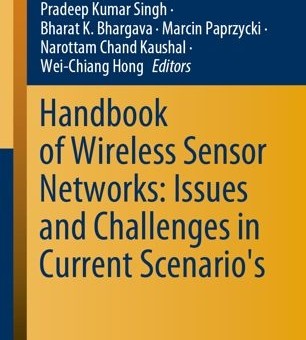A new edition of monography Handbook of Wireless Sensor Networks: Issues and Challenges in Current Scenario's, shows different aspects of wireless sensor networks. We especially recomend a chapter entitled: Low-Cost Architecture of the Universal Security Threat Detection System for Industrial IoT.
M. Hajder, P. Hajder, M. Nycz:Low-Cost Architecture of the Universal Security Threat Detection System for Industrial IoT, Handbook of Wireless Sensor Networks: Issues and Challenges in Current Scenario's, Springer International Publishing, pp. 301—324, 2020
Abstract
The chapter presents the new architecture of the distributed threat detection system for broadly understood information system security. Unlike existing systems, the system is heterogeneous in terms of information, communication, operation and hardware, architecturally using industrial Internet of Things solutions. Additionally, it is separated from the entity’s basic IT structure and based on the extensive use of parallel and distributed processing. In most of the available literature, improvements are sought in the way of wireless communication. In this work, the wired communication environment is examined, that is the backbone of any wireless sensor network. From the algorithmic point of view, it uses intelligent data analysis and biologically inspired methods. Communication environment is described using mainly graph theory, graph algebra and probability. The data collected by a heterogeneous group of autonomous traffic analyzers located at all levels of the communication hierarchy of the industrial information system is subjected to permanent analysis. Depending on the operating mode, the analyzers communicate with the central security node in one of three possible, complementary modes of transmission. Operating mode also determine how data is processed. In the simplest case it is carried out on the central node resources. On the other hand, in the most advanced one the system is in fact a parallel computer based on analyzers resources. The proposed architecture in the standard operating mode is integrated with the classic information system, in each of the emergency modes is separated from it. The work ends with the presentation of the empirical research results on the effectiveness of the proposed architecture.
PDF Version: https://link.springer.com/chapter/10.1007/978-3-030-40305-8_15








